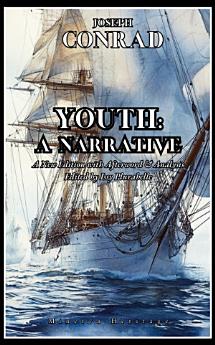Youth: A Narrative
About this ebook
This modern edition of Conrad's classic novel includes a fresh Afterword, extensive reference materials including a timeline of Conrad's life and works, character glossary and group discussion questions on this literary classic. The text of the novel has been slightly edited to remove archaic terminology and make it more readable to the modern reader.
The story dissects the paradox of nostalgia: how failure and suffering crystallize into myth when filtered through memory. Young Marlow’s ordeal aboard the Judea—a “venerable” ship held together by rust and hope—is a litany of disasters, yet decades later, he recalls it as his “greatest adventure.” Conrad isn’t just romanticizing youth; he’s exposing the mechanics of self-mythology. The voyage’s futility (the ship’s cargo, coal, literally fuels its own destruction) becomes a metaphor for youth itself—a combustion of energy spent chasing illusions. The older Marlow’s audience, middle-aged men murmuring in the shadows, serve as a chorus of disenchanted adulthood, their silent recognition underscoring the story’s central irony: that the glory lies not in achievement, but in the act of striving. The East, when finally glimpsed, is less a destination than a mirage, its shores smelling of “vegetation and rot,” a reminder that all quests end in ambiguity. Conrad’s prose swerves between the comic absurdity of the crew’s persistence and the haunting beauty of the sinking ship—a “flaming wreck” against the night, as ephemeral as youth’s fervor. The tale’s power lies in its refusal to resolve whether Marlow’s nostalgia is a lie or a necessary fiction. Is the “glow” of youth a truth or a trick of the light? Conrad lets the question hang, like smoke after the Judea’s final fire, felt but never grasped.











